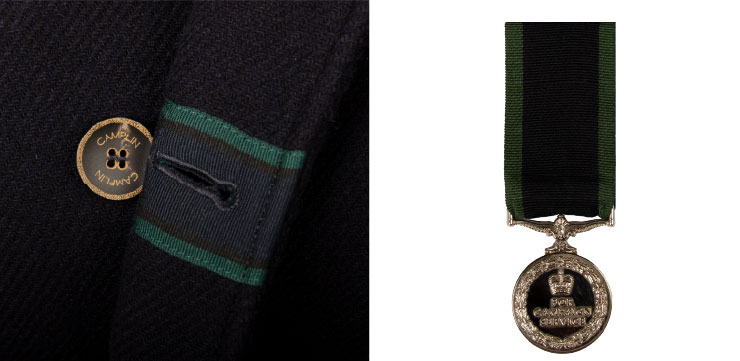
The term derives from Petty Officer of the Royal Navy: towards the end of the 19th century, there was a strong need to dress these officers with a uniform that was able to distinguish them from seamen and senior officers.
It was the Camplin family who came up with an answer, designing a P. Coat, later to become known as Peacoat, warm and protective to face days on the open sea, but also strong, practical, elegant and unique.
The Peacoat is a short sport coat, originally made of blue or black cloth, in reference to its military origins.
The name also refers to the name of the thick woollen fabric (pij) originally used to make it.
This jacket was soon to become very successful also outside the Royal Navy, even reaching the USA, and today is enjoying a second life thanks to a restyling that enhances its features and originality.

The blue-green grosgrain ribbon used to reinforce the buttonholes, which brings to mind the ribbon used for the Naval General Service Medal awarded to civilians who distinguished themselves in the service of the Royal Navy.

The Cordage, a short length of cord used as an extension to close the double-breasted jacket; this was used in colder weather when layers of additional clothing worn under the uniform made it impossible to close the jacket using the buttonhole. In this way, each sailor had his personalised cord for sea voyages. Così facendo, ogni marinaio aveva la sua corda su misura per i viaggi in mare.
Stay up to date on the latest news and receive a discount code of 10% off your first purchase.
Subscribe to the Camplin Newsletter!
Via Matteotti, 28
37032 Monteforte D’Alpone (VR)
P.I. 04456650235